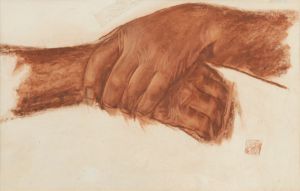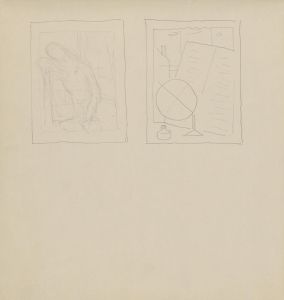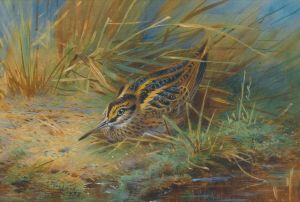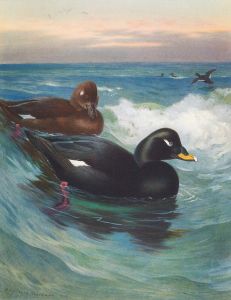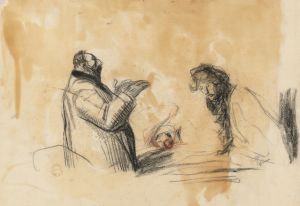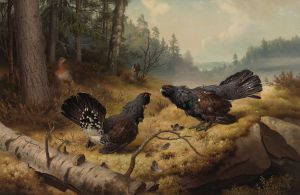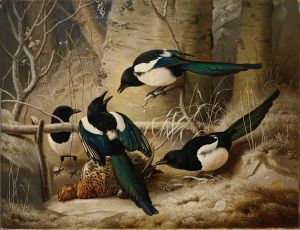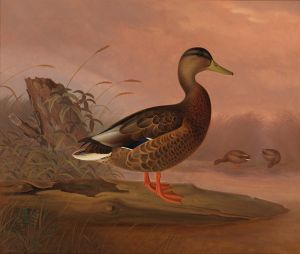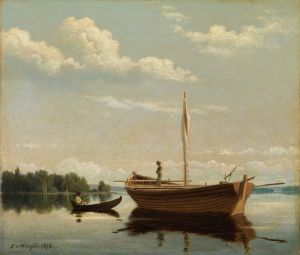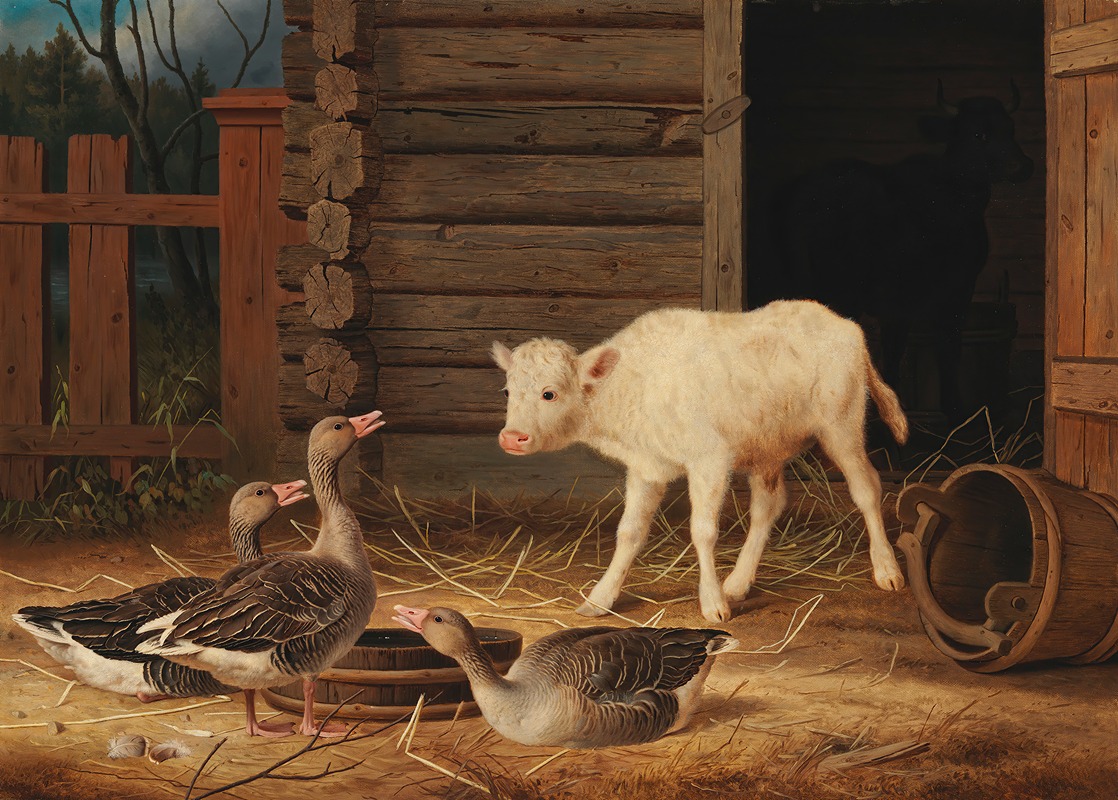
The Surprise
A hand-painted replica of Ferdinand von Wright’s masterpiece The Surprise, meticulously crafted by professional artists to capture the true essence of the original. Each piece is created with museum-quality canvas and rare mineral pigments, carefully painted by experienced artists with delicate brushstrokes and rich, layered colors to perfectly recreate the texture of the original artwork. Unlike machine-printed reproductions, this hand-painted version brings the painting to life, infused with the artist’s emotions and skill in every stroke. Whether for personal collection or home decoration, it instantly elevates the artistic atmosphere of any space.
Ferdinand von Wright was a Finnish painter known for his detailed and realistic depictions of wildlife and landscapes. One of his notable works is "The Surprise" (Finnish: "Yllätys"), which exemplifies his skill in capturing the natural world with precision and artistry. Born in 1822 in Haminalahti, Finland, von Wright was part of a family of artists, with his brothers Magnus and Wilhelm also being accomplished painters. Ferdinand von Wright's work is often associated with the Romantic movement, which emphasized the beauty and power of nature.
"The Surprise" was completed in 1880 and is a testament to von Wright's keen observation and understanding of wildlife behavior. The painting depicts a dramatic scene in the natural world, showcasing a moment of tension and action. It features a bird of prey, likely a hawk or an eagle, swooping down on its unsuspecting quarry. The prey, often depicted as a smaller bird or a mammal, is caught in a moment of vulnerability, highlighting the harsh realities of survival in the wild. This theme of predator and prey is a common motif in von Wright's work, reflecting his fascination with the cycles of nature.
Von Wright's attention to detail is evident in "The Surprise," where every feather and leaf is rendered with meticulous care. His ability to portray the textures and colors of the natural environment adds to the painting's realism and impact. The composition of the painting is dynamic, with the diagonal lines of the predator's wings and the prey's body creating a sense of movement and urgency. The background, often a lush forest or a serene landscape, provides a stark contrast to the violent encounter in the foreground.
Ferdinand von Wright's work, including "The Surprise," is significant not only for its artistic merit but also for its contribution to the documentation of Finnish wildlife. During the 19th century, Finland was undergoing significant changes, and von Wright's paintings serve as a historical record of the country's natural heritage. His work has been celebrated for its scientific accuracy as well as its aesthetic qualities, making it valuable to both art enthusiasts and naturalists.
"The Surprise" and other works by von Wright are housed in various collections, including the Ateneum Art Museum in Helsinki, which holds a significant number of his paintings. These works continue to be studied and appreciated for their technical excellence and their insight into the natural world.
Ferdinand von Wright passed away in 1906, but his legacy endures through his paintings, which continue to captivate audiences with their beauty and attention to detail. "The Surprise" remains a prime example of his ability to capture the drama and intricacy of nature, reflecting both the artist's skill and his deep appreciation for the world around him.





